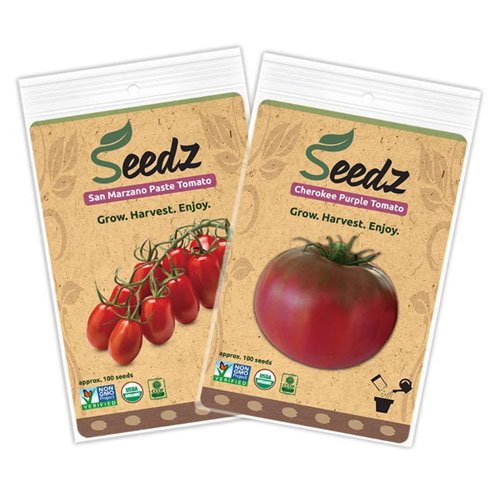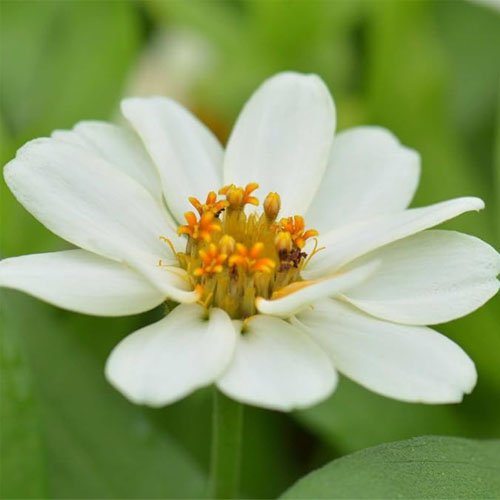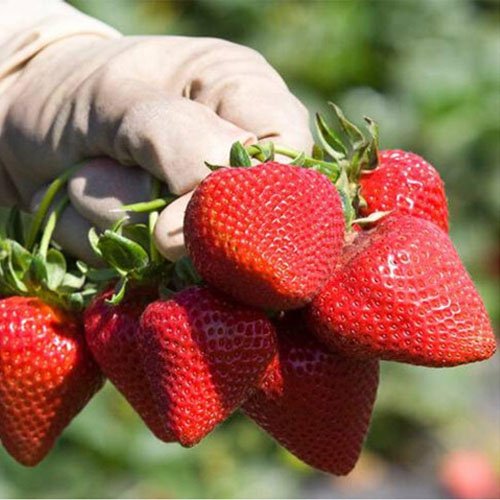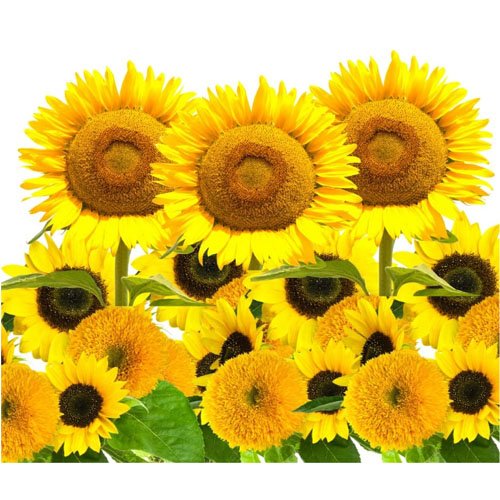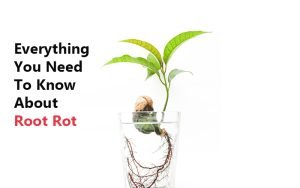Embarking on a gardening journey can be incredibly rewarding and therapeutic. If you’re a beginner, the first crucial step is choosing the right plants and some beginner gardening tools to get you started. We want to help you cultivate that green thumb and transform your outdoor space into a flourishing garden. Starting with easy-to-grow plants is a fantastic way to experience the joy of gardening without feeling overwhelmed.
So, whether you have a spacious backyard or a modest balcony, join us as we explore a curated selection of plants that require minimal effort and attention. These resilient beauties provide a sense of accomplishment for novice gardeners and bring a burst of vibrant color and life to your outdoor haven.
Are you ready to witness the magic of nurturing life? Let’s dive into the world of accessible and delightful outdoor gardening together!
1. Tomatoes
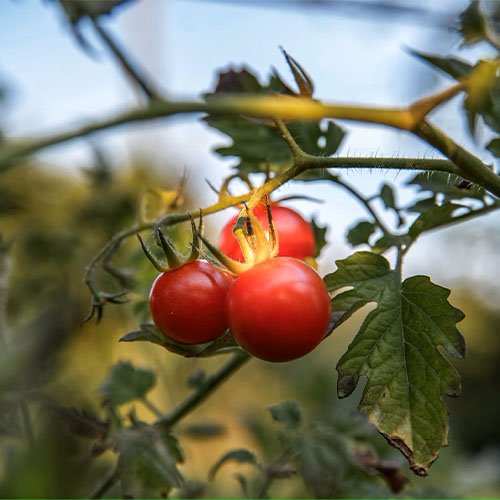
Tomatoes are the jewels of a vegetable garden. In the world of vegetables, this one is easy to grow. So gardeners with different levels of experience can hop on this boat (or should I say wheelbarrow?).
Color Varieties:
From classic red to vibrant yellow, orange, green, and even purple, tomatoes come in 1 shape but many colours. Popular varieties include the classic beefsteak, sweet and small Cherry tomatoes, and the strikingly dark and rich hues of the Black Krim.
Sun Exposure:
Tomatoes crave a minimum of 6-8 hours of direct sunlight daily. Choose a sunny location in your garden, or strategically place your saplings in places that have maximum sunlight exposure. Remember, insufficient sunlight can lead to leggy plants and reduced fruit production.
Soil Needs:
Tomatoes thrive in well-drained soil rich in organic matter. Avoid waterlogged conditions, as they can lead to root rot. Raised beds are an excellent option if your soil has poor drainage. A great way to increase the nutritional value of the soil is to add a thin layer of vegetable waste (like vegetable skins) between the soil where you will plant the saplings.
pH Level:
Maintain a slightly acidic to neutral soil pH between 6.0 and 7.0. A simple litmus test will determine if the soil is acidic enough. Adding a bit of Epsoma Organic Soil to your existing mix can reduce the pH content of the soil.
Buy Tomato Seeds Now!
2. Marigolds:
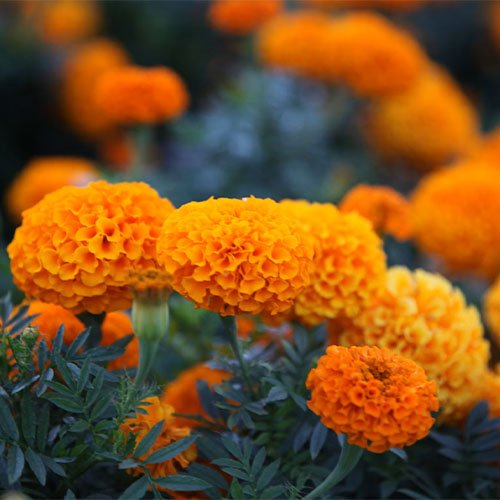
Welcome to the world of marigolds, cheerful blooms but also a natural pest control. These flowers stand out not just for their colorful hues but also for their multifaceted role in your garden. Marigolds are here to add a burst of life to your outdoor space. Let’s explore the charm of marigolds.
Color Varieties:
Dive into the impressive array of colors that marigolds bring to your garden canvas. From warm yellows and oranges to subtle creams and maroons, the color spectrum is diverse. Ever heard of the French Marigold (Tagetes patula) with its compact growth, or the African Marigold (Tagetes erecta) flaunting larger, showier blooms? There are even hybrid varieties with unique color combinations that add a touch of novelty to your garden.
Sun Exposure:
Marigolds thrive in full sun, making them perfect for sun-soaked areas. Make sure they get 6-8 hours of direct sunlight daily for the best growth and blooming. In shadier spots, marigolds might get a bit leggy and produce fewer flowers.
Container-Friendly:
Marigolds are excellent for container gardening. If your outdoor space has limited sunlight, Marigolds are a great option for vertical gardening. This flexibility makes them a versatile choice for gardens of all sizes.
Soil Needs:
The reason why Marigolds are excellent for beginners is their ability to tolerate different soil conditions. Marigolds prefer well draining, densely nutrient soil, but cannot tolerate poor or sandy conditions. Boosting the soil with nutrients can improve their bloom.
Natural Pest Control:
Marigolds aren’t just pretty; they’re also natural pest deterrents. The aroma of marigold foliage helps repel nematodes and other pests, making them excellent companions for vegetables and other plants. Plant marigolds near tomatoes, peppers, and potatoes to contribute to a healthier, pest-resistant garden.
3. Basil:
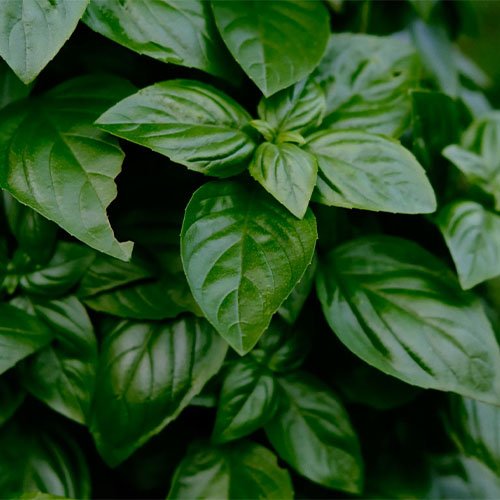
Basil is a cherished herb that not only elevates your culinary creations but also brings fragrance to your garden. Whether you’re a culinary enthusiast or just discovering your green thumb, cultivating basil promises a flavorful and aromatic dimension to your outdoor space.
Color Varieties:
Discover the visual delight that basil brings to your garden with its variety of colors and leaf shapes. Common basil varieties include:
- Sweet Basil (Ocimum basilicum): Featuring glossy green leaves, Sweet Basil is the classic and most widely used variety in Italian cuisine. Its vibrant green color is a staple in both gardens and kitchens.
- Purple Basil (Ocimum basilicum var. purpurascens): With striking dark purple leaves, Purple Basil adds an ornamental touch to herb gardens. Its rich color makes it a popular choice for both culinary and decorative purposes.
- Thai Basil (Ocimum basilicum var. thyrsiflora): Recognized by its unique anise-like flavor and purple-tinged stems, Thai Basil is a flavorful addition to Asian dishes. The combination of taste and appearance makes it a distinctive choice.
- Lemon Basil (Ocimum basilicum var. citriodorum): Infused with a subtle lemon fragrance, Lemon Basil features bright green leaves. This variety adds a citrusy twist to salads, beverages, and desserts.
Sun Exposure:
Basil thrives in full sun, craving at least 6-8 hours of direct sunlight daily. Placing basil in a sunny spot ensures robust growth, intense flavors, and a bountiful harvest.
Container Gardening:
For those with limited garden space, basil is well-suited for container gardening. Planting basil in pots allows you to move the herb to sunnier locations, maximizing sunlight exposure.
Soil Needs:
Basil prefers well-drained soil to prevent waterlogged conditions, which can lead to root rot. Amending the soil with organic matter, such as compost, improves drainage and provides essential nutrients.
pH Level:
Maintain a slightly acidic to neutral soil pH between 6.0 and 7.0 for optimal basil growth. Regularly testing and adjusting the soil pH ensures that the herb can absorb nutrients efficiently.
Harvesting and Pruning:
Harvest basil regularly to encourage bushier growth and prevent the plant from flowering too soon. Pinching off the tips of the stems, especially when the plant has six to eight leaves, promotes branching and a more abundant supply of fresh leaves.
4. Lavender:

Lavender will enchant you with their fragrances and delicate blossoms. They have symbolized serenity for centuries. Lavender is a versatile and aromatic herb. It not only graces gardens with its elegant appearance but also offers a myriad of uses, from culinary delights to aromatherapy.
Types:
Dive into the soothing palette of lavender, where each variety contributes its unique charm to gardens and landscapes. Popular lavender color varieties include:
- English Lavender (Lavandula angustifolia): Renowned for its calming fragrance and vibrant violet-blue flowers, English Lavender is a favorite for crafting sachets and essential oils
- French Lavender (Lavandula stoechas): Known for its distinct flower heads topped with tufts, French Lavender features a range of colors, including purple, pink, and white, making it a captivating addition to garden borders.
- Spanish Lavender (Lavandula dentata): Characterized by serrated leaves and vibrant purple blooms, Spanish Lavender adds texture and color to garden landscapes. Its aromatic foliage is prized in various culinary applications.
- Lavandin (Lavandula x intermedia): A hybrid lavender variety often boasting larger flower spikes and a more robust growth habit, lavandin is popular for both ornamental and oil production purposes, with colors ranging from deep purple to pale blue.
Sun Exposure:
Lavender thrives in full sunlight, craving at least 6-8 hours of direct sun exposure daily. Placing lavender in a sunny location ensures vigorous growth, abundant blooms, and an intensified fragrance.
Soil Needs:
Lavender is especially sensitive to waterlogged conditions, emphasizing the importance of well-drained soil. Ideal for preventing root rot and promoting overall health, sandy or gravelly soil types are perfect companions for lavender.
Neutral to slightly alkaline soil is ideal for lavender. You can do this naturally with egg shells and oyester shells. Always keep a pH tester handy to make keep records of the soil pH balance.
Ventilation:
Make sure you plant lavendars in places that are quite airy and well ventilated. The fresher the air around them, the better the aroma they give out. Make sure there’s enough space between each plant so that each of them are well ventalited and happy.
Pruning for Prosperity:
Regular pruning is essential for maintaining the shape, health, and longevity of lavender plants. Prune the plants in early spring to remove dead growth and shape them. After flowering, trim back spent blooms to encourage a second flush of flowers and prevent the plant from becoming woody.
5. Zinnias:

The vibrant world of zinnias are cheerful hues and lively blooms, to create a celebration of summer in your garden. Gardeners love these flowers because they are easy to grow and attract pollinators on their front lawn.
Color Varieties:
Dive into the diverse and captivating color palette of zinnias, offering a plethora of choices to suit any garden theme. Popular zinnia color varieties include:
- Classic Zinnia Elegance (Zinnia elegans): These traditional zinnias come in an array of colors, from bold reds and pinks to sunny yellows and oranges. Zinnia Elegance varieties often feature a single row of petals, creating a classic and timeless look.
- Profusion Zinnias (Zinnia hybrida): Known for their compact growth and continuous blooming, Profusion Zinnias come in various colors, including cherry, orange, and white. Perfect for adding a splash of color to borders and containers.
- Cactus Flowered Zinnias (Zinnia elegans ‘Cactus Flowered’): Characterized by their quilled and spiky petals, Cactus Flowered Zinnias exhibit a unique and striking appearance. Colors range from deep purples to bright pinks and reds, creating a visually dynamic display.
- Benary’s Giant Zinnias (Zinnia elegans ‘Benary’s Giant’): Prized for their large, dahlia-like blooms in an assortment of colors, including vibrant oranges, rich purples, and soft pastels. Benary’s Giants make a bold statement in flower beds and bouquets.
Sun Exposure:
Zinnias thrive in full sunlight, demanding at least 6-8 hours of direct sun exposure daily. Plant them where they can bask in the sun’s warmth, encouraging robust growth, prolific blooms, and vibrant colors.
Versatile Containers:
Zinnias are well-suited for container gardening, allowing you to showcase their vivid colors on patios, balconies, or even window boxes. Ensure that containers receive adequate sunlight for these flowers to flourish.
Soil Needs:
Zinnias prefer a well-drained soil to prevent issues like root rot. Incorporate Perlite and organic matter, such as compost, into the soil to enhance fertility and drainage, ensuring optimal growing conditions.
If they are planted in a well-draining soil they are quite tolerant to a range of pH balances and soil types. Plant them in well training soil with a neutral pH and you can expect a healthy bloom.
Deadheading for Continuous Blooms:
To encourage continuous blooming throughout the growing season, regularly deadhead faded flowers. This not only maintains a tidy appearance but also redirects the plant’s energy into producing new blooms, prolonging the visual spectacle.
Grow Zennias Today
6. Strawberries:

Imagine the joy of grabbing strawberries from your front lawn any time you’re in the mood for some of nature’s desserts. Strawberries are surprisingly easy to grow!
Color Varieties:
Dive into the diverse and appealing fruit that strawberries offer, with an array of colors, textures, and flavors. Popular strawberry color varieties include:
- June-Bearing Strawberries: These varieties typically produce a single large harvest in late spring to early summer. ‘Chandler,’ ‘Honeoye,’ and ‘Allstar’ are robust cultivars offering flavorful berries.
- Everbearing Strawberries: As the name suggests, everbearing strawberries provide multiple smaller harvests throughout the growing season. ‘Albion,’ ‘Seascape,’ and ‘Quinault’ ensure a more extended period of strawberry enjoyment.
- White Strawberries: Offering a unique twist to the traditional red, white strawberries such as the ‘White Soul’ and the ‘Pineberry’ have a pale, creamy color while maintaining the classic strawberry flavor.
- Alpine Strawberries: Known for their petite size and intense sweetness, alpine strawberries come in various colors, including red, white, and yellow. ‘Mignonette’ and ‘Yellow Wonder’ are popular alpine varieties.
Sun Exposure:
Strawberries thrive in full sun, requiring at least 6-8 hours of direct sunlight daily for optimal fruit production. Ensure your strawberry patch receives ample sunlight to promote healthy growth and maximize the sweetness of the berries.
Considerate Planting:
When planning your strawberry garden, choose a sunny location with well-drained soil. Elevated beds or containers are excellent options for growing strawberries, allowing for better drainage and preventing waterlogged conditions.
Soil Needs:
Strawberries prefer well-drained, loamy soil that is rich in organic matter. So make sure you use a healthy blend of compost and perlite to keep the soil well draining and nutrient rich.
Aim for a slightly acidic to neutral soil pH between 5.8 and 6.2 for strawberries. Regular soil testing and adjustments will ensure that the plants get maximum nutrition that will improve their bloom.
Proper Plant Spacing and Mulching:
To promote air circulation and minimize the risk of diseases, plant strawberries with adequate spacing. Mulching around the plants helps retain soil moisture, suppress weeds, and prevent the berries from coming into direct contact with the soil.
Grow Your Strawberries From Seeds:
7. Sunflowers:

Sunflowers are the golden crowns and towering presence to epitomize sunny optimism in any garden. These iconic blooms not only turn heads with their vibrant colors but also follow the sun’s path, embracing its warmth throughout the day.
Color Varieties:
Dive into the bright and cheerful appearance of sunflowers, coming in various colors, sizes, and shapes. Popular sunflower color varieties include:
- Classic Yellow Sunflowers: The quintessential sunflower, with large golden-yellow petals surrounding a dark central disk. Varieties like ‘Helianthus annuus’ and ‘Mammoth’ embody the traditional sunflower charm.
- Red Sunflowers: Adding a bold twist to the classic yellow, red sunflowers like ‘Red Sun’ and ‘Moulin Rouge’ feature warm, reddish hues, bringing a touch of sophistication to sunflower gardens.
- Orange Sunflowers: Radiating warmth and energy, orange sunflowers such as ‘Autumn Beauty’ and ‘Italian White’ introduce a vibrant splash of color to the garden, reminiscent of a fall sunset.
- Bicolor Sunflowers: Bicolor sunflowers, like ‘Ring of Fire’ and ‘Strawberry Blonde,’ showcase a captivating blend of contrasting colors, often with a combination of red, orange, and yellow in a single bloom.
Sun Exposure:
They are called ‘Sunflowers’ for a reason. When they get 6-8 hours of sun they tilt their heads slowly in the direction of the sun throughout the day!
Tolerant of Different Conditions:
While sunflowers prefer full sun, they are remarkably adaptable and can tolerate a range of soil conditions. However, providing them with ample sunlight ensures robust growth, larger blooms, and a more spectacular display.
Soil Needs:
Sunflowers prefer well-drained soil to prevent waterlogged conditions that can lead to root rot. Enhance fertility and aid in proper drainage by amending the soil with organic matter, such as compost.
Aim for a neutral to slightly acidic soil pH between 6.0 and 7.5. Conduct soil tests and make adjustments as needed to create an environment where sunflowers can efficiently absorb nutrients.
Supporting Tall Stems and Heads:
As sunflowers grow tall and produce heavy flower heads, providing support is essential. Stake or use a sunflower ring to prevent bending or breakage, ensuring that these majestic flowers stand tall and proud in your garden.
Harvesting Sunflower Seeds:
Once the sunflower heads mature and the seeds develop, you can harvest the seeds for various uses. Allow the flower heads to dry on the stalk, then remove the seeds for snacking, bird feeding, or even planting for the next season.
Grow Your Own Sunflower Seeds Today!
8. Petunias
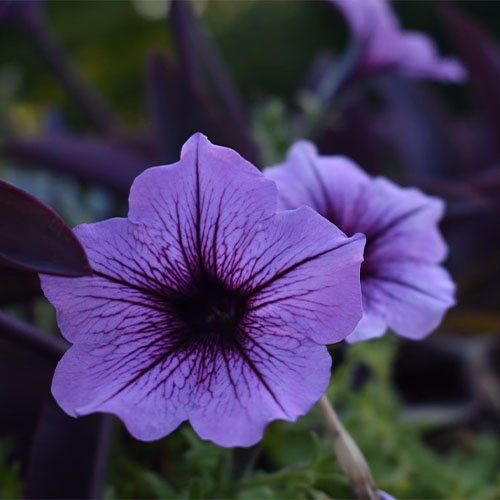
The enchanting world of petunias is where cascading blooms and a kaleidoscope of colors make them stalwarts in the realm of annual flowers. These versatile and low-maintenance plants are cherished by gardeners for their ability to add vibrant splashes of color to borders, hanging baskets, and containers.
Color Varieties:
Dive into the extensive array of colors, patterns, and shapes that petunias offer, making them a favorite choice for adding visual appeal to gardens. Popular petunia color varieties include:
- Grandiflora Petunias: Known for their large, showy blooms, Grandiflora petunias come in a variety of colors, including vibrant purples, pinks, reds, and whites. These varieties make a stunning impact on garden beds and containers.
- Multiflora Petunias: Producing an abundance of smaller flowers, Multiflora petunias offer a wide range of colors. They are excellent for creating dense, colorful displays and are often chosen for hanging baskets and window boxes.
- Milliflora Petunias: Characterized by petite blooms, Milliflora petunias come in various colors and are perfect for small containers, borders, or ground cover. Their compact size and prolific flowering make them a charming addition to any garden.
- Wave Petunias: Celebrated for their spreading and trailing habits, Wave petunias create a wave-like carpet of color. Available in an array of hues, including blues, pinks, and purples, they are ideal for hanging baskets and ground cover.
Sun Exposure:
Although they tolerate partial shade, petunias thrive in full sunlight, requiring at least 6 hours of direct sunlight daily for optimal growth and prolific blooming. Placing them in sunny locations ensures vigorous plants and an abundance of colorful flowers.
Soil Needs:
Petunias thrive in slightly acidic soil (pH between 6.0 to 7.0) well-drained soil that prevents waterlogging, which can lead to root rot.
Deadheading for Continuous Blooms:
To encourage continuous flowering, regularly deadhead blooms. This not only maintains a neat and tidy appearance but also directs the plant’s energy towards producing new flowers, ensuring a continuous display of color.
Container Gardening Tips:
Petunias are excellent candidates for container gardening. Ensure containers have drainage holes to prevent waterlogged soil, use a well-balanced potting mix, and fertilize regularly to support healthy growth and continuous flowering.
9. Bell Peppers:
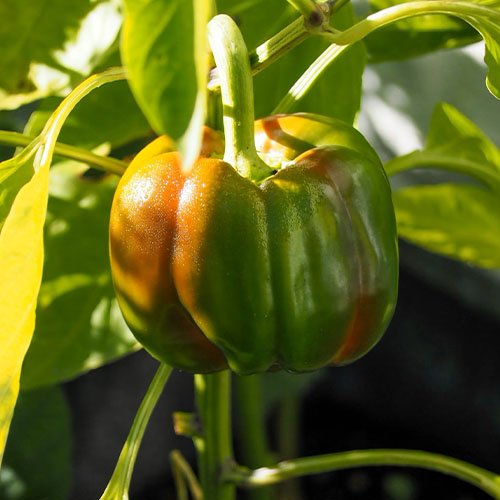
Their crisp textures and sweet, mild flavors transform your vegetable garden into a palette of hues. These versatile gems aren’t just culinary staples; they’re valuable additions to your home garden.
Color Varieties:
Bell peppers come in a variety of colors:
- Green Bell Peppers: Starting as pale yellow and gradually changing color, these bell peppers have a mildly tangy flavor, perfect for salads, stir-fries, and crunchy raw snacks.
- Red Bell Peppers: Fully ripened, these peppers turn red, developing a sweeter taste. Rich in vitamins and antioxidants, they’re a flavorful and nutritious addition to various dishes.
- Yellow Bell Peppers: Milder and slightly sweet, yellow bell peppers add a burst of sunshine to both cooked and raw dishes, contributing to a visually appealing culinary presentation.
- Orange Bell Peppers: Falling between red and yellow in taste, these peppers offer a balance of sweetness and tanginess, adding warmth and attractiveness to your meals.
Sun Exposure:
Bell peppers thrive in places that get 6-8 hours of sunlight. They also thrive in warmer temperatures or particularly in places where the soil is warmed.
Soil Needs:
Bell peppers prefer neutral to slightly acidic, well-drained soil, rich in organic matter.
Watering and Mulching:
Consistent moisture, especially during flowering and fruiting, benefits bell peppers. Mulch retains soil moisture, suppresses weeds, and maintains even soil temperatures, contributing to overall health and productivity.
Supporting Heavy Fruit:
As bell peppers produce fruit, you must support branches to prevent breakage. Staking or caging ensures a more productive and visually appealing garden.
10. Mint:
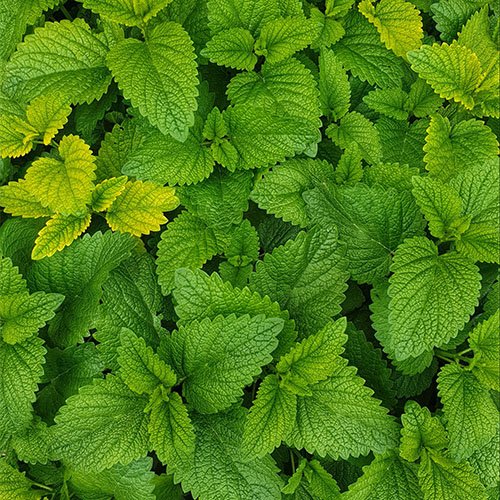
Mint is a versatile herb that brings a breath of freshness to your gardens and kitchens. Whether you fancy it in teas, culinary creations, or as a fragrant ground cover, mint is a resilient and rewarding addition to any herb garden.
Varieties:
Join us in discovering the various cultivars of mint, each offering a unique flavor profile and growth habit.
- Peppermint (Mentha x piperita): It has a strong, peppery flavor, which makes it a classic choice for teas, desserts, and culinary delights. It has a cooling sensation which is perfect for refreshing beverages.
- Spearmint (Mentha spicata): Speratment features a milder, sweet flavor. It is a versatile herb, which can be used in both sweet and savory dishes. It is a common choice for mint sauces, cocktails, and garnishes.
- Chocolate Mint (Mentha × piperita ‘Chocolate’): Infused with a subtle coco undertone, it adds a unique twist to desserts, beverages, and savory dishes. Delicious aromatic leaves contributes to the garden’s charm.
- Orange Mint (Mentha x piperita ‘Citrus’): Orange Mint boasts a citrusy aroma, adding a zesty flavor to beverages, salads, and desserts. It is a favorite for both culinary and aromatic purposes.
Sun Exposure:
While bell peppers are tolerant to some shade they need about 4-6 hours of sun everyday.
Soil Needs:
Bell peppers need a well drained and nutrient dense soil. It does not thrive in clay soil, or those that get waterlogged.
Conclusion
As we conclude our journey through the vibrant world of gardening plants for beginners, we’ve uncovered a tapestry of colorful blooms, fragrant herbs, and delicious vegetables waiting to grace our gardens. By exploring the diverse varieties of gardening plants, understanding their sun exposure preferences, and soil needs, you can create the best atmosphere for your green babies.
Remember that every plant has its story to tell and every gardener has their unique touch to add. Although we feel the above are great plants to start with, don’t limit yourself to these. Explore the world of greenery and find which fruits, flowers and vegetables you love to grow the most.



